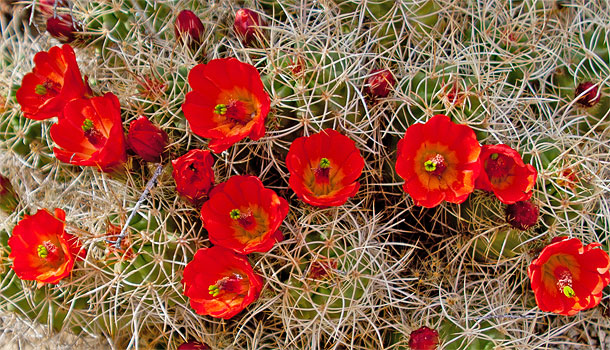
Wild bee research at UC Natural Reserve System
Monday 14 November 2011
The lives of bees are inseparably entwined with the plants they pollinate. For this reason, a tremendous amount of native bee research in California occurs in the wild landscapes protected by the UC Natural Reserve System.A network of 37 sites located in the mountains, deserts, coastlines and woodlands of California, the system makes a wide range of natural habitats available for research and education. The following are just a sampling of the native bee research within the UC Natural Reserve System:
Commercial pollination goes native
As colony collapse disorder and other diseases decimate honey bees, growers have been at a loss for how to replace their pollination services. The USDA/Agricultural Research Service Bee Lab in Logan, Utah is investigating the use of California's native bee species as hardy alternative pollination agents. Bee lab scientists have trapped blue orchard bees (Osmia lignaria) from Hastings Natural History Reservation in Carmel Valley to determine whether this species is a good fit for pollinating California almond orchards.
A bee’s eye view of climate change
Bees have evolved to time their emergence in spring to exactly when their host plants begin to flower. This interdependence has scientists worried about how climate change will affect native pollinator populations. As shifting environmental conditions alter the blooming schedule of plants, no one is sure whether bees will be able to keep their calendars sufficiently synchronized with host plants to survive.
Professor Louie Yang of UC Santa Barbara is tackling this topic by studying solitary mason bees at Sagehen Creek Field Station near Truckee. Yang is identifying which plants the bees visit by performing genetic analyses on the insects' pollen caches. He will then identify the environmental cues each plant uses to time flowering, such as day length and soil temperature. Comparing these against the signals bees use to determine their spring emergence will tell Yang whether bees and their plant partners can remain in step over the long term.
Where the bees roam
UC Davis professor emeritus Robbin Thorp laid the foundation for native bee research in California at the NRS’s Jepson Prairie Reserve near Davis. Thorp has spent decades describing associations between solitary bees and the vernal pool wildflowers they pollinate. (See feature: Tiny saviors in our backyard.)
Many of the colorful native wildflowers on the prairie are pollinated effectively only by specialist bees that visit just one to a few closely related flowers species. Thorpe has used his understanding of specialist bees to develop recommendations for restoring bee habitats and planting bee-friendly urban gardens.
The buzz about biodiversity
National parks tend to have a good handle on the types of bears, birds and frogs found within their boundaries. But inventories of invertebrate species such as bees are harder to come by. Bees can be particularly difficult to track, as many native species are out and about only during the brief flowering periods of specific plants.
The problem is compounded in the Mojave Desert, where extreme conditions and dramatic annual differences in rainfall makes native plant flowering erratic. Laurelin Evanhoe, a doctoral student at Cornell University, is studying the little-known bee fauna of the eastern Mojave Desert at Sweeney Granite Mountains Reserve. She is interested in how being a specialist affects an animal's sensitivity to climate change and other environmental vagaries. Her findings will bolster what little information is available on bee biodiversity in the Mojave National Preserve.
Other bee studies at NRS investigate how the blister beetle parasite manipulated the chemistry of pheromones to skip from one bee host species to another; how microbes affect pollination strategies among plants and bees; how factors such as the availability of cavity nests limit solitary bee populations; and more.
Photo at top (Claret cup cactus flowers) by Peggy Fiedler, UC Natural Reserve System